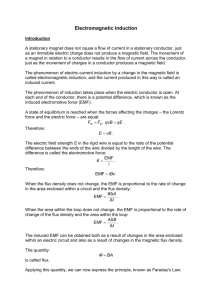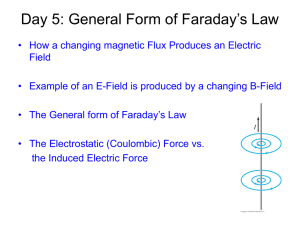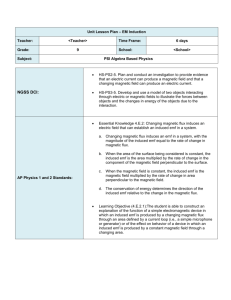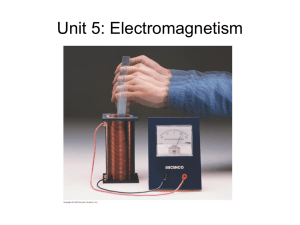22-3,4,5
advertisement
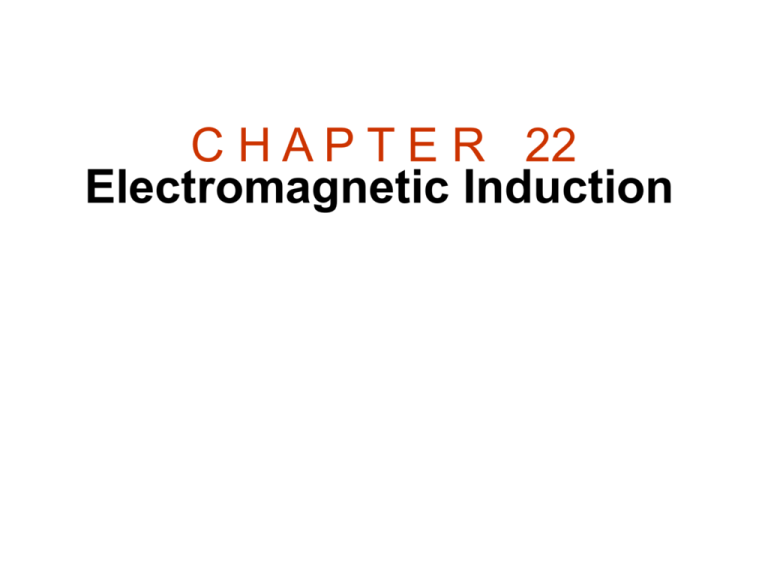
C H A P T E R 22 Electromagnetic Induction Chapter 22 Electromagnetic Induction •Induced emf and Induced current •Motional emf •Magnetic flux •Faraday’s law of electromagnetic induction •Lenz’s law •Applications: cruise control, ground fault interrupter, induction stove, electric guitar, microphone, & speaker. •Electric generator •Inductance •Transformers and electric power transmission 22.3 Magnetic Flux Graphical Interpretation of Magnetic Flux The magnetic flux is proportional to the number of magnetic flux lines passing through the area. 22.3 Magnetic Flux A General Expression for Magnetic Flux B A B(Cos) A The SI unit of magnetic flux is the weber (Wb), named after the German Physicist W.E. Weber (1804-1891). 1 Wb = 1 T.m2. EXAMPLE 4: Magnetic Flux A rectangular coil of wire is situated in a constant magnetic field whose magnitude is 0.50 T. The coil has an area of 2.0 m2 . Determine the magnetic flux for the three orientations, f = 0°, 60.0°, and 90.0°, shown below. 22.4 Faraday's Law of Electromagnetic Induction Michael Faraday found experimentally that the magnitude of the induced emf is proportional to the rate at which the magnetic flux changed. Faraday’s law can be written as, N ; B A. t where N is the number of turns in the loops, A is the area of one loop, ξ is the induced emf, and B┴ is the perpendicular component of the magnetic field. Lenz’s Law N ; B A. t The SI unit for the induced emf is the volt, V. The minus sign in the above Faraday’s law of induction is due to the fact that the induced emf will always oppose the change. It is also known as the Lenz’s law and it is stated as follows, The current from the induced emf will produce a magnetic field, which will always oppose the original change in the magnetic flux. A Ground Fault Interrupter An Induction Stove The water in the metal pot is boiling. Yet, the water in the glass pot is not boiling, and the stove top is cool to the touch. The stove operates in this way by using electromagnetic induction. 22.5 Lenz's Law The induced emf resulting from a changing magnetic flux has a polarity that leads to an induced current whose direction is such that the induced magnetic field opposes the original flux change. Determining the Polarity of the Induced Emf 1.Determine whether the magnetic flux that penetrates a coil is increasing or decreasing. 2.Find what the direction of the induced magnetic field must be so that it can oppose the change in flux by adding to or subtracting from the original field. 3.Having found the direction of the induced magnetic field, use RHR-2 (see Section 21.7) to determine the direction of the induced current. Then the polarity of the induced emf can be assigned because conventional current is directed out of the positive terminal, through the external circuit, and into the negative terminal. Application of Lenz’s Law

